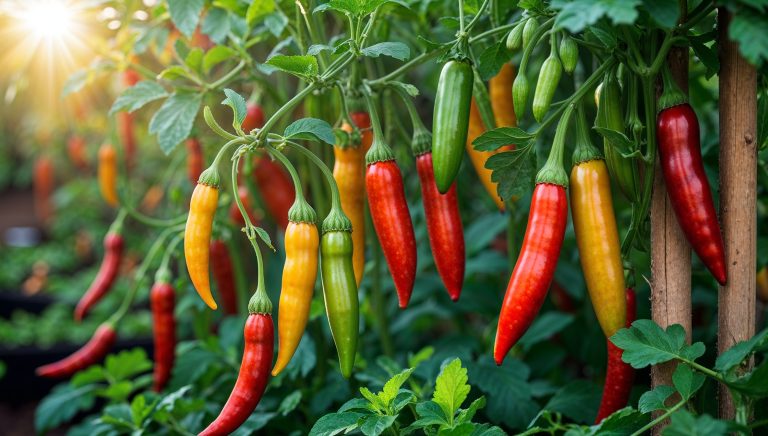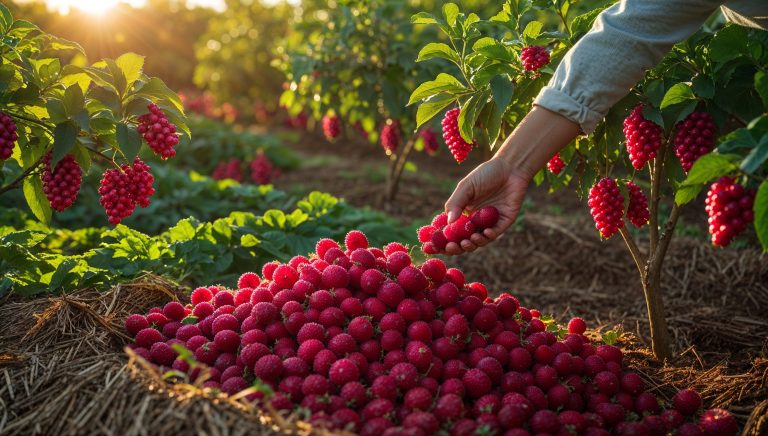Strawberries are one of the most popular fruits to grow in home gardens due to their sweet flavor, versatility, and relatively easy care. Whether you’re looking to enjoy fresh strawberries straight from the garden or make delicious jams and desserts, growing strawberries is a rewarding experience. In this article, we’ll guide you through the process of growing and caring for strawberries, from planting to harvesting, so you can enjoy this delicious fruit in abundance.
1. Choosing the Right Strawberry Variety
There are several different types of strawberries, each with its own unique growth habits and harvest times. Selecting the right variety for your garden is essential to ensure a successful harvest.
- June-Bearing Strawberries: These are the most common type of strawberries and produce fruit all at once in early to mid-summer. They tend to produce larger, sweeter berries, but their harvest period is short. June-bearing strawberries are ideal for gardeners who want a concentrated harvest to enjoy fresh strawberries at their peak.
- Everbearing Strawberries: Everbearing strawberries produce fruit multiple times throughout the growing season, typically in early summer, late summer, and fall. While their berries may be slightly smaller than June-bearing varieties, they provide a longer harvest period, making them great for gardeners who want strawberries throughout the season.
- Day-Neutral Strawberries: Day-neutral strawberries produce fruit continuously throughout the growing season, as long as the weather is warm enough. These strawberries are not affected by day length and will keep producing as long as they are provided with adequate light, warmth, and care. They are great for gardeners who want a steady supply of strawberries.
- Alpine Strawberries: These smaller, wild strawberries are perfect for growing in containers or hanging baskets. They are incredibly sweet and flavorful, though their harvest is limited compared to other varieties. Alpine strawberries are great for gardeners who want a unique variety with a rich taste.
2. Planting Strawberries
Planting strawberries is relatively easy, but proper preparation is essential to ensure a successful harvest. Here are the steps to planting strawberries in your garden:
- Choose the Right Location: Strawberries need full sun to thrive, so choose a location that gets at least 6-8 hours of direct sunlight per day. Strawberries also need well-drained soil, so avoid areas where water tends to pool, as this can lead to root rot.
- Soil Preparation: Strawberries prefer slightly acidic soil with a pH of 5.5 to 6.8. To improve soil quality, mix in plenty of compost or organic matter to increase soil fertility and drainage. If your soil is heavy or clay-like, consider amending it with sand or perlite to improve aeration and drainage.
- Planting Depth and Spacing: Plant strawberries so that the crown (the central growing point) is just above the soil surface. If you plant them too deep, the crown can rot, and if they are too shallow, the roots may dry out. Space strawberry plants about 12-18 inches apart to give them enough room to spread and grow. If planting in rows, space the rows about 3-4 feet apart to allow for adequate airflow.
- Container Planting: If you don’t have much garden space, consider growing strawberries in containers or hanging baskets. Choose a container that is at least 12 inches deep and has drainage holes. Plant strawberries in high-quality potting soil, and ensure the container receives plenty of sunlight.
3. Watering Strawberries
Proper watering is essential for growing healthy strawberries. They need consistent moisture, especially when the fruit is developing, but they also do not like to sit in soggy soil. Here’s how to water your strawberry plants:
- Watering Frequency: Water strawberries deeply but infrequently. It’s best to water your strawberries early in the day to allow the soil to dry by evening, which helps prevent fungal diseases. Strawberries typically need about 1 to 1.5 inches of water per week, but you may need to water more frequently during hot, dry periods.
- Watering Method: Use a drip irrigation system or a soaker hose to water the plants directly at the base. This method prevents wetting the leaves, which can lead to diseases like powdery mildew or gray mold.
- Mulching: Apply a layer of mulch around your strawberry plants to help retain moisture, suppress weeds, and regulate soil temperature. Straw, pine needles, or wood chips are good mulching options. Be sure to keep the mulch a few inches away from the plant’s crown to prevent rot.
4. Fertilizing Strawberries
Strawberries are light feeders, meaning they don’t require heavy fertilization, but they do benefit from regular feeding to support healthy growth and fruit production.
- Initial Fertilization: When planting strawberries, incorporate compost or well-rotted manure into the soil. This will provide the necessary nutrients for the plants as they establish their roots.
- Ongoing Fertilization: After the first flush of fruit has been harvested, feed your strawberry plants with a balanced fertilizer that is low in nitrogen and high in phosphorus and potassium. These nutrients promote fruiting and help strengthen the plants for the following season.
- Organic Fertilizers: For organic gardening, you can use fish emulsion, compost tea, or other organic fertilizers to feed your strawberries. These fertilizers are slow-release and improve the overall health of your garden soil.
5. Pruning and Managing Strawberry Plants
Pruning and managing strawberry plants is essential for ensuring high-quality fruit production and preventing diseases. Here’s how to manage your strawberry plants:
- Removing Runners: Strawberry plants produce runners, or “daughter plants,” that can quickly spread and crowd your garden. While runners are useful for propagating new plants, it’s important to remove excess runners to prevent them from taking over your garden. Pinch off runners during the growing season to encourage the plant to focus on fruit production.
- Cutting Back After Harvest: After harvesting, prune your strawberry plants by removing dead or damaged leaves and cutting back any old foliage. This encourages new growth and helps prevent disease. In late fall, remove any remaining leaves and mulch the plants to protect them from winter frost.
- Replanting: Over time, strawberry plants will become less productive. Consider replanting every 3-4 years to ensure a consistent harvest. You can also propagate new plants from runners to maintain a healthy strawberry patch.
6. Pest and Disease Management
Strawberries can be susceptible to a variety of pests and diseases, but with the right care, you can prevent or manage these issues effectively.
- Common Pests: Strawberries are prone to pests such as slugs, aphids, and strawberry root weevils. To control pests, use natural methods like hand-picking, introducing beneficial insects (such as ladybugs), or applying organic insecticides like neem oil.
- Diseases: Strawberries are vulnerable to fungal diseases like powdery mildew, gray mold, and verticillium wilt. To prevent disease, ensure good airflow around your plants, water at the base of the plants, and remove infected leaves promptly. Use fungicides if necessary, but always follow the instructions on the label.
- Bird Protection: Birds love to eat ripe strawberries, so consider using bird netting to protect your fruit. You can also place reflective objects, like aluminum foil strips or reflective tape, in the garden to deter birds.
7. Harvesting Strawberries
Harvesting strawberries at the right time is crucial for enjoying their full flavor and sweetness.
- When to Harvest: Strawberries are typically ready for harvest when they have reached their full color and are firm to the touch. For most varieties, this means the fruit is bright red, though some varieties may be pink or white when ripe.
- How to Harvest: Gently twist the strawberry off the plant, being careful not to damage the fruit or the plant. Leave the green calyx (the small green leaf at the top of the fruit) intact. It’s best to harvest strawberries early in the morning when the fruit is cool and the sugars are at their peak.
- After Harvesting: After harvesting, use the strawberries immediately or store them in the refrigerator. Fresh strawberries are best eaten within a few days, but you can freeze them for long-term storage.
Conclusion
Growing strawberries in your garden is a rewarding experience that yields delicious fruit year after year. With the right variety, proper care, and a little patience, you can enjoy fresh strawberries from your own backyard. From selecting the right variety to harvesting at the perfect time, following these steps will help you create a healthy, thriving strawberry patch that produces plenty of sweet, juicy berries for all your culinary needs.

